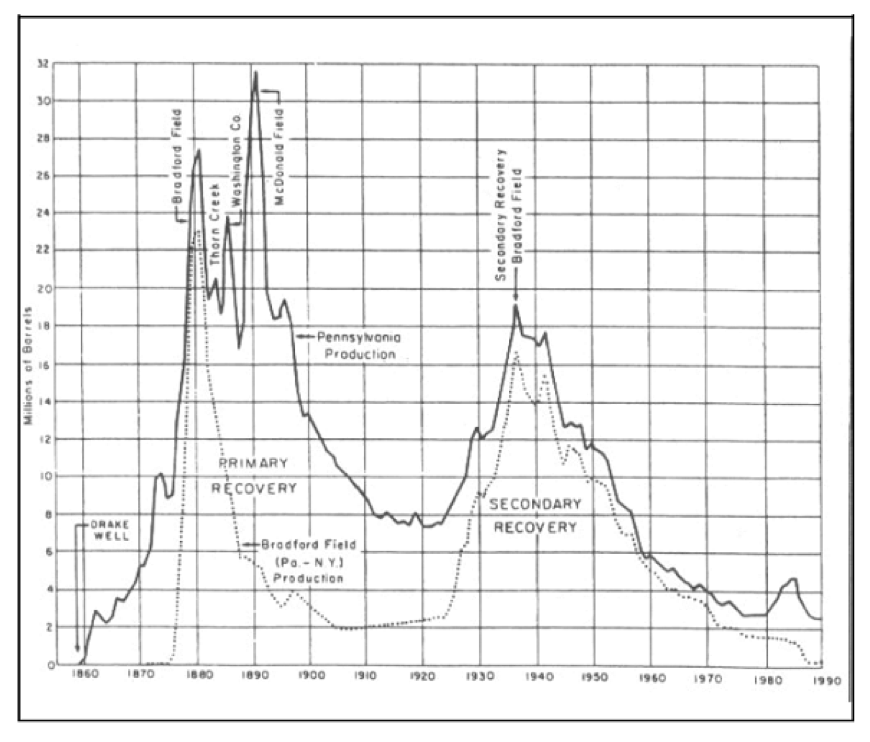When you think of the United States top oil and gas producing states, Pennsylvania probably doesn’t immediately come to mind. But the state’s ties to petroleum go back 150 years – and today, Pennsylvania once again finds itself as a key production hub thanks to a remarkable shale boom.
Way back in 1859, the world’s first commercial oil well was drilled in Pennsylvania under the supervision of Colonel Edwin Drake. When the well struck oil, a boom hit the area. For two decades, the state was the world’s leading producer of crude oil. Since that time, more than 350,000 oil and natural gas wells have been drilled across the state. Unfortunately, the state’s oil production peaked in 1891 at nearly 32 billion barrels and spent the better part of the following century on a steady decline to the point that it no longer warranted a major focus from the oil and gas industry:

